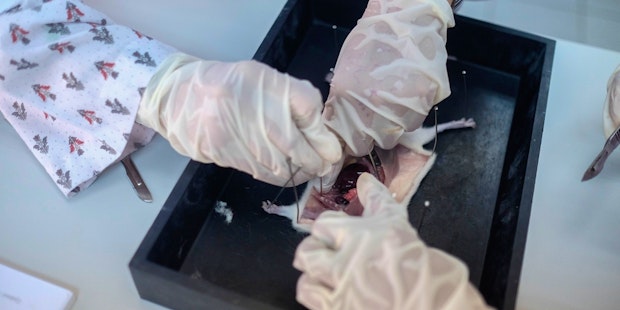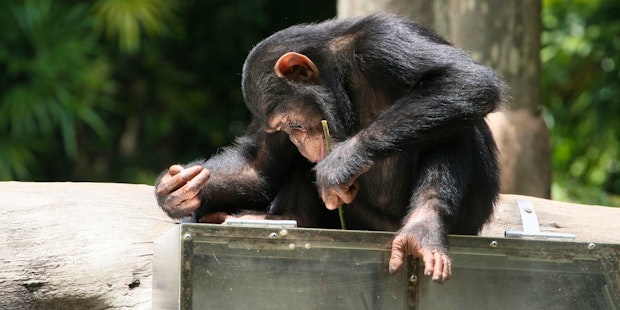Play a game of Eco-Jenga
Explore what causes an ecosystem to collapse
Discovery Place Kids Rockingham
An ecosystem is an interconnected relationship between the living and non-living elements of an environment. Living things are classified by their characteristics into species. A population is a group of organisms within the same species, while a community is mixture of several different species.
The cool thing about an ecosystem is that it is constructed by multiple, different communities co-existing together, depending on and influencing one another. The absence or shifting of one could affect another in positive or negative ways.

In this fun Eco-Jenga game, we will explore what causes an ecosystem to collapse and the important roles different organisms play in the survival of an environment. The game will take about 10 minutes to prepare and offers approximately 20 minutes of learning time. The game is best suited for middle school students.
Materials:
- Jenga tower
- Washable marker
- Regular marker
- Painter’s tape
- Paper
- Pencil
Directions:

1. Choose your organism. Using a marker and tape, choose and make labels that you will put on your Jenga blocks. For each category listed below, choose an organism that performs the function in its ecosystem. Unless otherwise stated, label one block for each category:
- Decomposer (dead or decaying things) such as mushrooms, earthworms
- Pollinator such as bees, butterflies, hummingbirds
- Flowering plant such as poppies, goldenrods, daylilies
- Primary consumer (an organism that feeds on producers) such as caterpillars, grasshoppers, snails, field mice. Choose four and label four blocks.
- Secondary Consumer (an organism that acquires energy by feeding on primary consumers) such as snakes, bluebirds, sparrows, frogs. Choose two and label two blocks.
- Producer (organisms that produce their own food) such as grass, sunflowers, apple trees, algae, ferns, sycamore trees. Choose six and label six blocks.
- Animals. Pick animals that would be found in forest made up of trees that lose their leaves (deciduous) like the forests here in North Carolina. Choose five animals and label five blocks. Two of the animals should compete for the same prey, if possible. Examples include raccoons, American black bears, red foxes, deer, American grey squirrels and Virginia opossums. As you work through this step, it might be helpful to first write out a few examples on a piece of paper. While you do that, think about how the animals you have selected would interact with each other and also human beings that share their environment.
2. Label your abiotic factors. For a habitat to be successful, certain things must be available for organisms to survive. Using a marker and tape, identify four non-living factors and write them on four Jenga blocks. These could include water, wind, rain, temperature, rocks and soil composition.
3. Consider ecosystem relationships. Consider each organism’s relationship with other organisms within its population and community. Does it compete? Does it have a predator or is it prey? The answers to these questions will determine the organism’s placement within the tower.

4. Build your tower. Now that you have identified the organisms in your community and their abiotic needs, construct your Jenga tower. Build your tower to reflect the importance of certain species within the ecosystem, whether they serve as the base of the food chain, like a producer, or help keep a population, like grazing animals, in check. For example, producers (organisms that make their own food with help from the sun) should be on the bottom of the tower as well as abiotic factors like air, space and water.
5. Let’s Play Eco-Jenga!
- Choose a block and remove it. Once a block has been removed look to see if it is an abiotic or biotic factor within the ecosystem. If so, set it aside for later, if not, place on top of the tower.
- If the block removed is an abiotic factor, like clean air or water, remove three more blocks.
- If the block is a producer, an organism that makes its own food, then pull one more block and set both aside. Do the same for primary consumers.
- If the block is secondary consumer, add all removed blocks to the tower, be careful not to knock it over. Consideration: Why might an ecosystem topple when a consumer is removed? What does the reintroduction of the previous removed blocks represent?
- If the block is primary consumer, add one producer block back to the tower.
- If the block removed is a pollinator, also remove a producer block from the bottom.
- If the block removed is a decomposer add a producer block back to the tower.
- If a block is not labeled, play it as you normally would.
- Continue to play until your Jenga ecosystem collapses.
6. Reflect. After playing, think about the different ways the removal or addition of an organism changed the ecosystem. Which organisms had the most effect when removed or added?
How to adjust for younger learners
For younger learners, focus just on producers, consumers and decomposers. Visit a green space and see what examples you can find of each. Encourage them to draw and describe the different types of organisms they see and to consider how they might influence one another.


